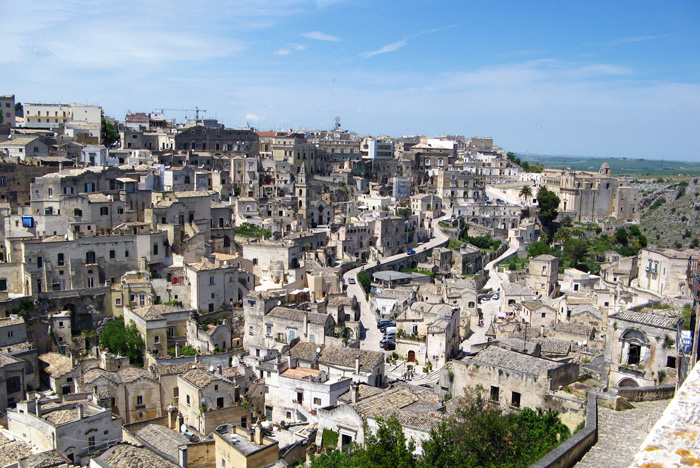Although this area has been settled since prehistoric times, the town of Matera itself was founded by the Romans on the edge of a ravine in the 3rd century BC. While the modern town center is fairly typical of Italian towns, the slopes just below its edges are anything but. This is where caves were dug out and used for housing, storage and stabling.
As recently as the 1950s, the caves of Matera had been continuously inhabited for centuries. The two cave districts in Matera are called the Sasso Caveoso and the Sasso Barisano. The occupants were the poorest peasants.
Looking across the ravine, several natural caves are visible:
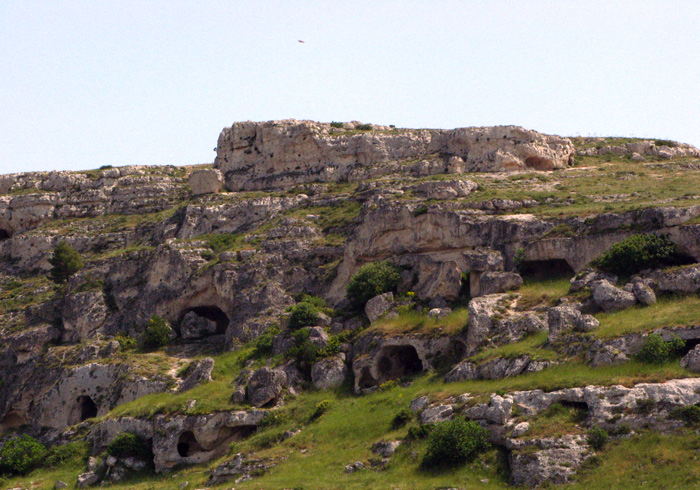
On the town side of the ravine, the cave houses in Sasso Caveoso are tightly packed:
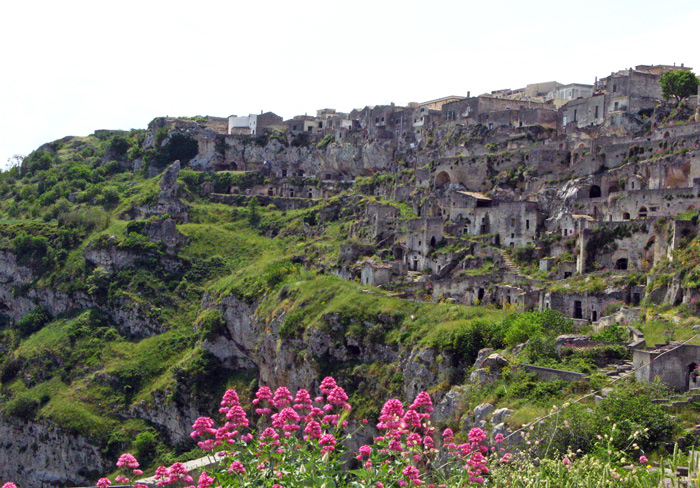
Shortly after I took the photo above, we entered one of the cave houses that had been furnished and restored as it was before abandonment in the 1950s:
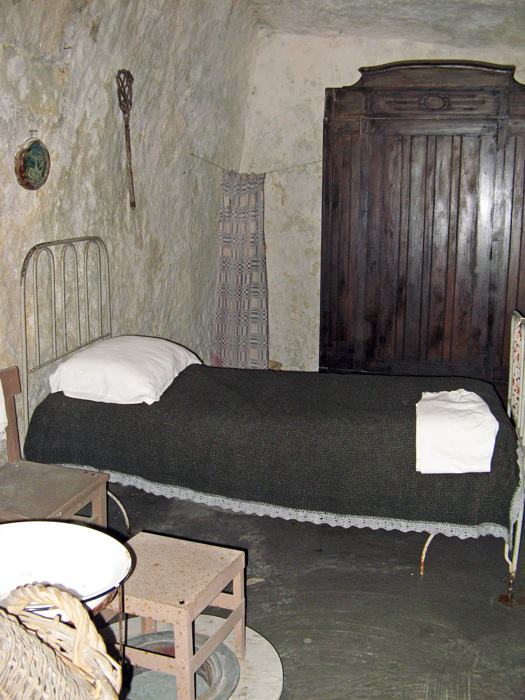
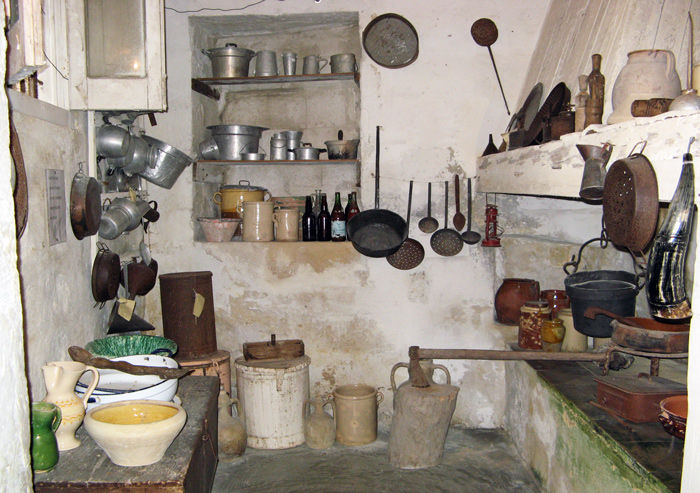
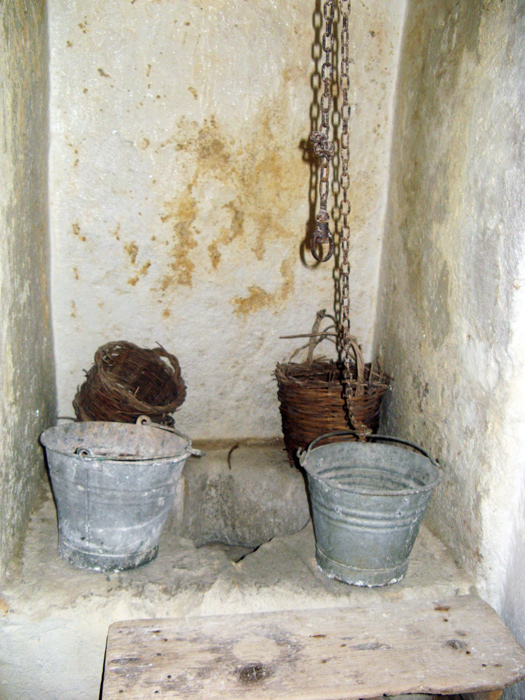
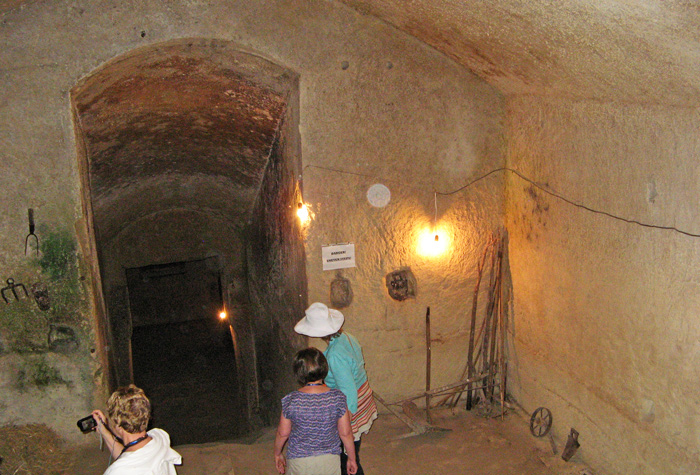
Emerging from the cave house, we had a different view of Sasso Caveoso, looking up toward the town itself:
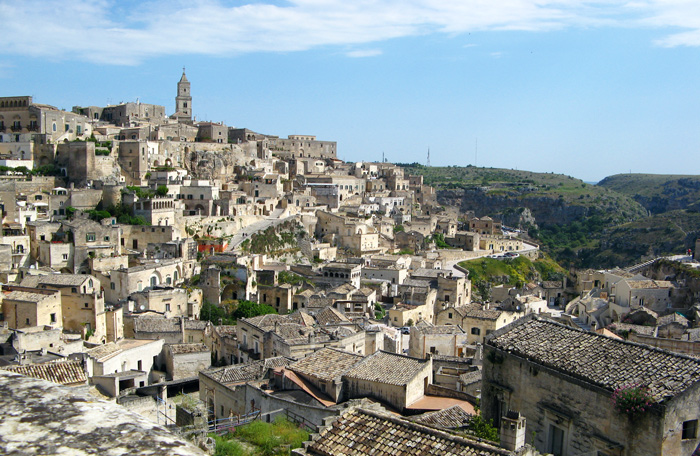
Until the 1950s, hundreds of families were still living in crowded cave houses here. By then, the Sassi had become a by-word for poverty. Living so closely with animals and lack of proper sanitation led to malaria, dysentery and high infant mortality. The squalor and unhealthy conditions became a national scandal, particularly after publication of Carlo Levi’s memoir, “Christ Stopped at Eboli.” That book rocked the nation with his description of the area as pagan, lawless, desperately poor, superstitious and riddled with filth and disease.
Visiting in 1950, the Italian Prime Minister was so appalled that he set in motion a draconian plan to relocate the entire Sassi’s population (about 16,000) to the town above. Though well-intentioned, this misguided utopian vision would forcibly isolate families in new public houses that were, in effect, dismal, claustrophobic boxes. Thus was the “shame of Italy” shut down, abandoned and made uninhabitable.
Until the late 1980s the Sassi were considered areas of poverty and left to disintegrate but that has slowly been changing since. A few more well-to-do residents moved back and renovated old cave houses. In 1993, the Sassi were made a UNESCO World Heritage site. Ever since, Matera has become steadily more popular as an off-the-beaten-track tourist destination. More and more old cave houses are being converted into comfortable modern dwellings or into hotels, B&Bs and restaurants.
Hollywood, too, has helped with this regeneration. Because of the ancient and primitive scenery in and around the Sassi, they have been used by filmmakers as the setting for ancient Jerusalem. Mel Gibson’s film, “The Passion of the Christ,” is just one of the movies made here.
Near Sasso Caveoso, we toured a former church, hollowed out of rock, called Santa Lucia Alle Malve. From the exterior, there is little inkling of what lies inside:

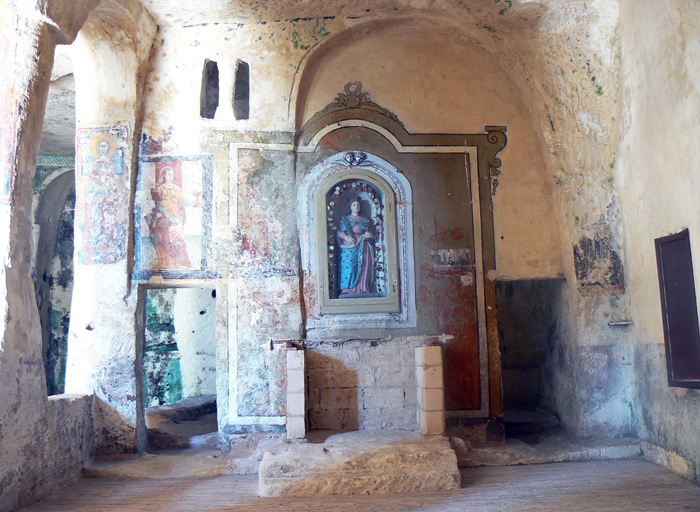
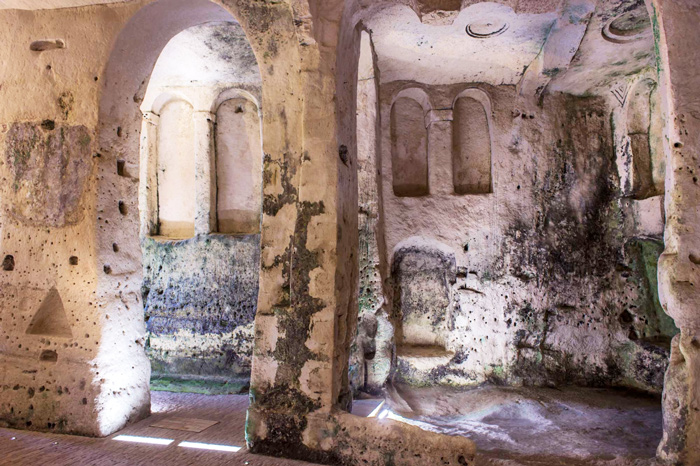
Besides the Sassi, Matera holds some worthwhile sights. One is the Purgatory Church (Chiesa del Purgatorio), which was completed in 1747. It has a single theme: Death, which was very fashionable at the time of construction. Death was considered not as an end, but as the beginning of a better life:
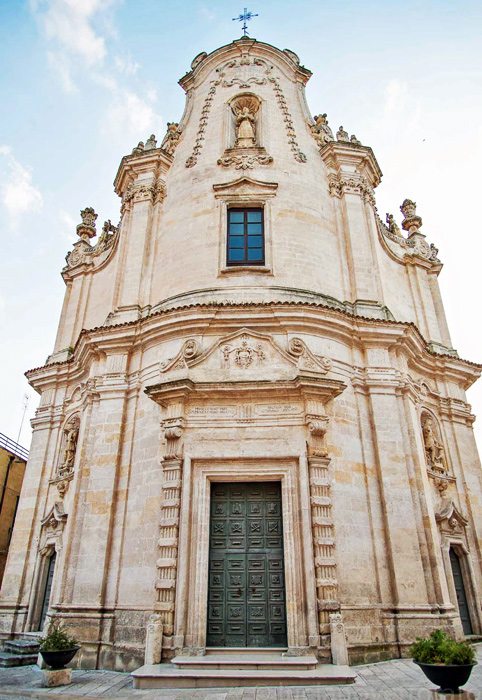
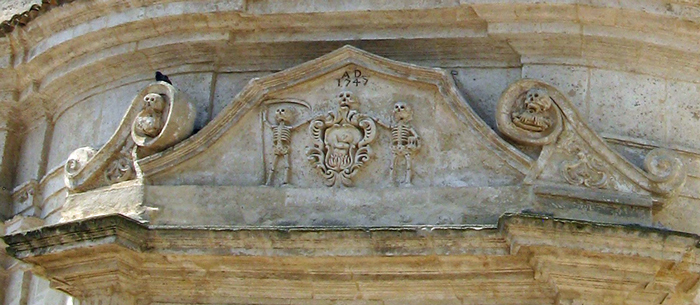
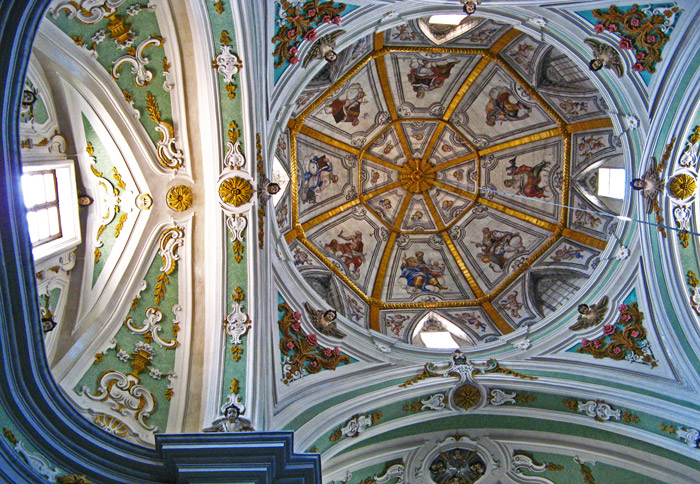
The St. Francis of Assisi Church may be the most beautiful church in the city with its Baroque facade. Its setting is also prominent, overlooking a large square:
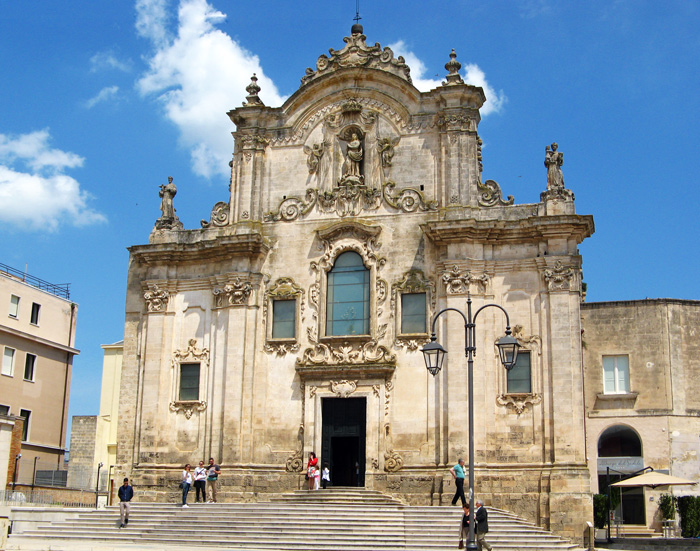
With time running out, we did, at least, have a view down into Sasso Barisano:
